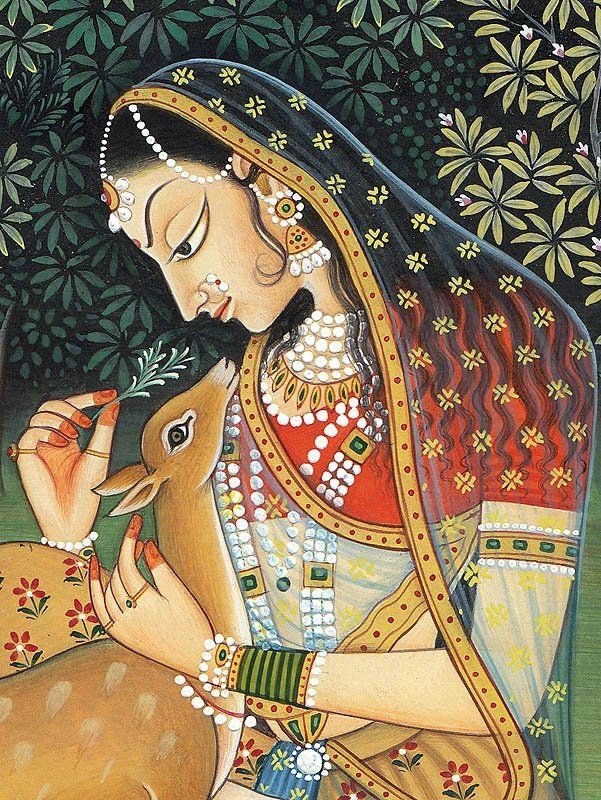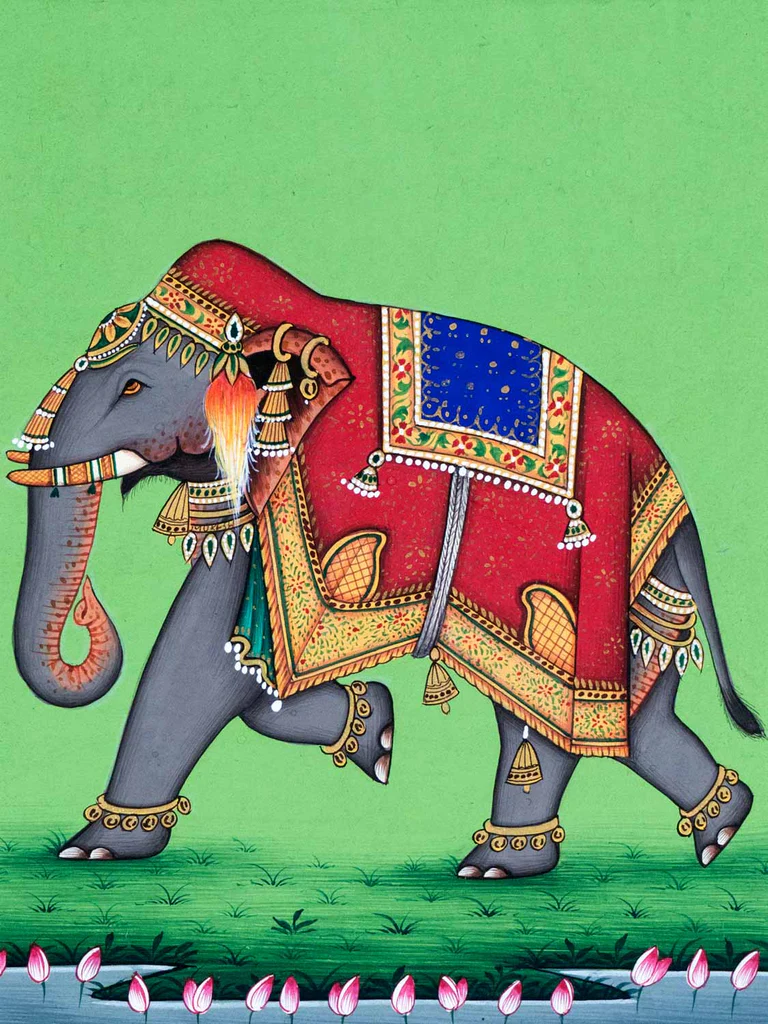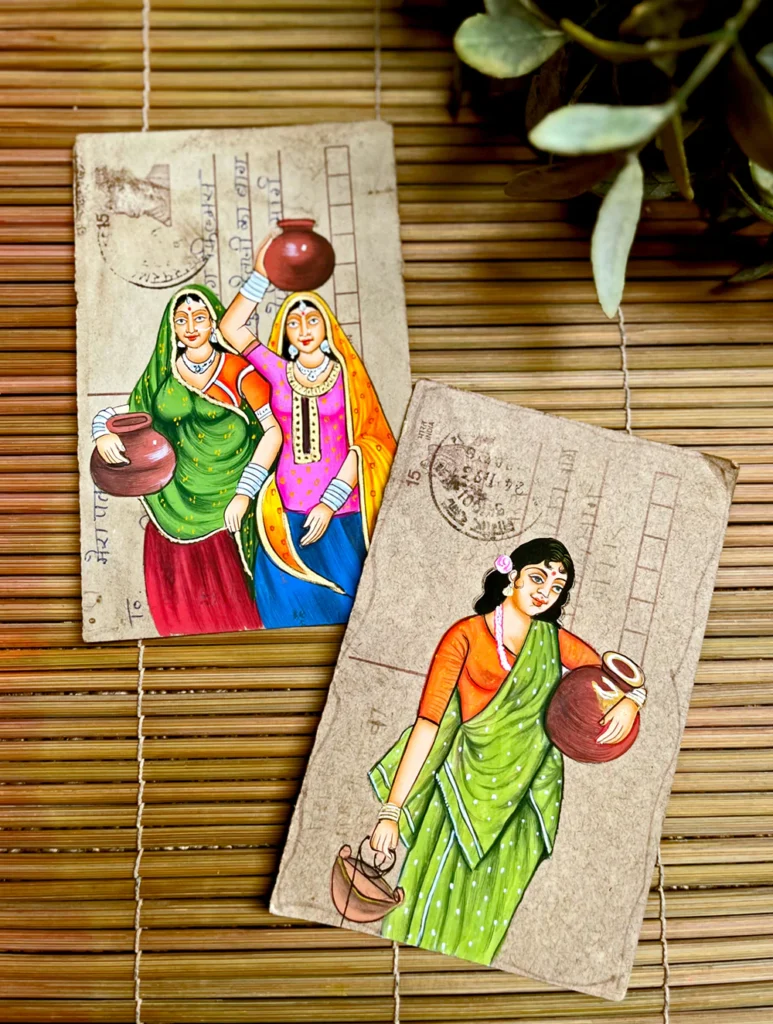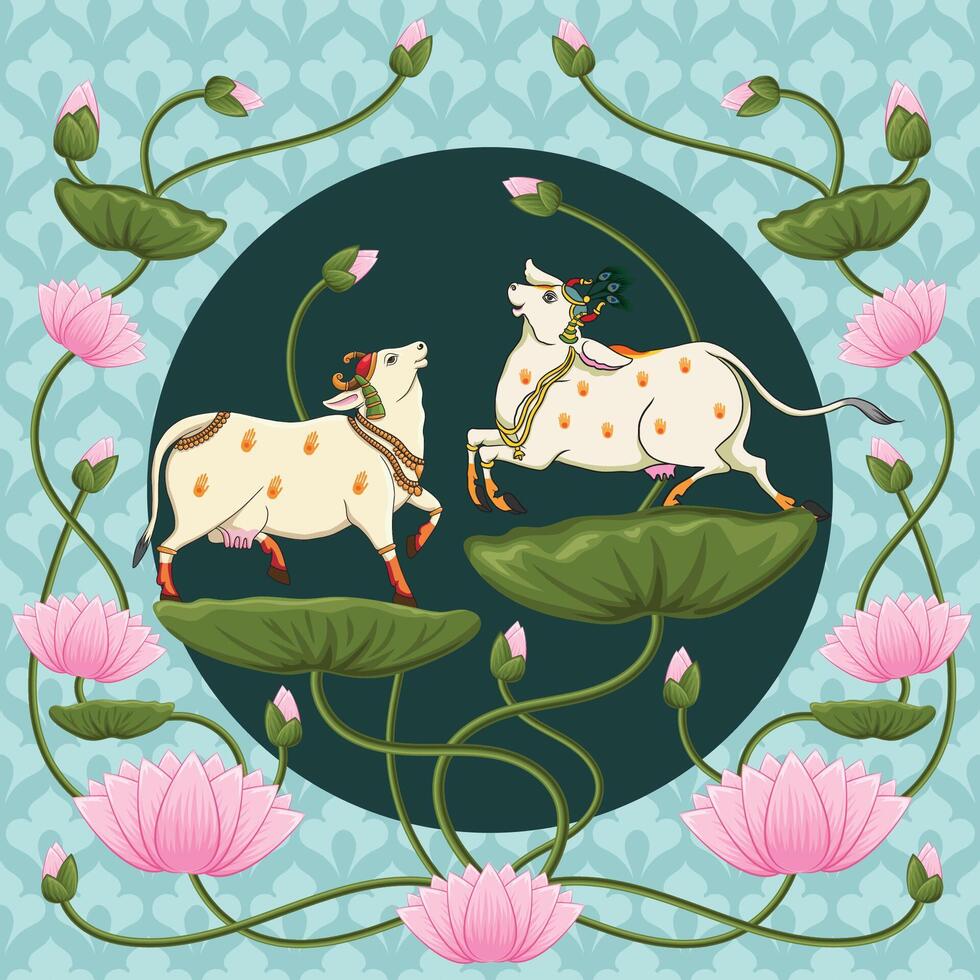Miniature art is a form of highly detailed, small-scale artwork that has been practiced for centuries across many cultures. Despite its size, miniature art is not defined merely by dimensions, but by the intricacy, precision, and refined techniques used to create it. Here’s a breakdown to elaborate on it:

Origins & Cultural Contexts
- South Asia (India, Pakistan):
- Mughal miniatures: Developed under the patronage of the Mughal Empire (16th–19th centuries), combining Persian, Indian, and Islamic styles. Common subjects include court scenes, battles, nature, and romantic tales.
- Rajput and Pahari styles: More vibrant and expressive, often focusing on mythology and love stories like Radha-Krishna.
- Artists use squirrel hair brushes, natural pigments, and vellum or handmade paper.
- Persia (Iran):
- Persian miniatures flourished from the 13th century, especially during the Timurid and Safavid periods. These works were often found in illuminated manuscripts like the Shahnameh (Book of Kings).
- Known for elaborate gardens, architecture, and storytelling with a strong spiritual or poetic theme.
- Europe:
- Medieval Europe saw illuminated manuscripts, often religious texts, with ornate borders and tiny illustrations.
- Portrait miniatures in the 16th–18th centuries served as personal keepsakes or diplomatic gifts, painted in watercolor on ivory or vellum.
- China and Japan:
- Miniature painting appeared in scrolls and fans, often focusing on nature, calligraphy, and philosophical themes.
- Miniature painting appeared in scrolls and fans, often focusing on nature, calligraphy, and philosophical themes.

🎨 Techniques & Mediums
- Scale: Usually no larger than 25 square inches (some even smaller).
- Detailing: Requires extreme precision—microscopic strokes for features, clothing, and backgrounds.
- Materials: Gold leaf, crushed gemstones, and plant-based pigments were traditionally used; today, artists may also use acrylics or gouache.
- Surfaces: Vellum, ivory, paper, silk, wood, and even metal.

Modern Miniature Art
- Many contemporary artists continue the tradition while introducing modern themes, such as urban life or social commentary.
- Miniature sculptors create tiny 3D scenes or figures, some even needing magnification to fully appreciate.
- There’s also a rise in digital miniatures—high-res digital art made to look like traditional miniatures or created for games and NFTs.
✨ Why Miniature Art Matters
- It requires patience, mastery, and concentration.
- It reflects the values, stories, and aesthetics of its time.
- Its small size invites intimacy and contemplation—viewers often need to lean in and engage closely.

Miniature Painting: “Two Cows in Harmony” (Imagined Description)
At the heart of a finely framed, jewel-toned miniature, two cows stand gracefully side by side, their forms rendered in meticulous detail, no larger than a palm. One cow is a soft almond white, symbolizing purity, while the other is a rich, earthen brown, reflecting strength and grounding.
Their gentle eyes are expressive, lined with delicate strokes of black ink, and their hides are subtly textured with hundreds of tiny brushstrokes that give the illusion of softness. Around their necks hang gold-threaded garlands, and tiny bells glint with the sheen of real metallic pigment.

Miniature Painting: “Rasa Lila – The Divine Dance” (Imagined Description)
In the center of a moonlit Vrindavan forest, under the shimmer of a twilight sky dusted with silver stars, Lord Krishna stands poised in mid-dance, his flute held delicately to his lips. He is surrounded by a circle of radiant Gopis (cowherd maidens), each lost in the bliss of divine rhythm, their arms lifted, anklets chiming in harmony.
The scene is composed in a circular pattern, symbolizing unity and eternity—Krishna appears not once, but many times, dancing simultaneously with each Gopi, illustrating the miraculous nature of his divine form. His peacock-feather crown, sapphire-blue skin, and yellow dhoti are rendered in vibrant hues with intricate golden detailing that catches the light.
The Gopis’ garments flutter as they spin, painted in delicate layers of rose pinks, emerald greens, and saffron golds, each fold meticulously defined. Their jewelry—nose rings, bangles, and toe-rings—gleam with touches of silver leaf.
Tiny flowers fall from the Kadamba trees above, caught in a soft breeze, while a white moon casts a glowing aura, washing the scene in an ethereal light. Every blade of grass, every tree leaf is painted with loving attention, true to the miniature tradition.
A fine border frames the scene, filled with motifs of dancing peacocks, lotuses, and sacred conch shells. At the bottom of the painting, a Sanskrit verse from the Bhagavata Purana is inscribed in gold, evoking the celestial nature of this dance of love and devotion.
This painting wouldn’t just be art—it would be meditation in color, a spiritual vision in a palm-sized frame.
Would you like a poetic caption, a mythological background on the Rasa Lila, or maybe a short story based on this painting?
